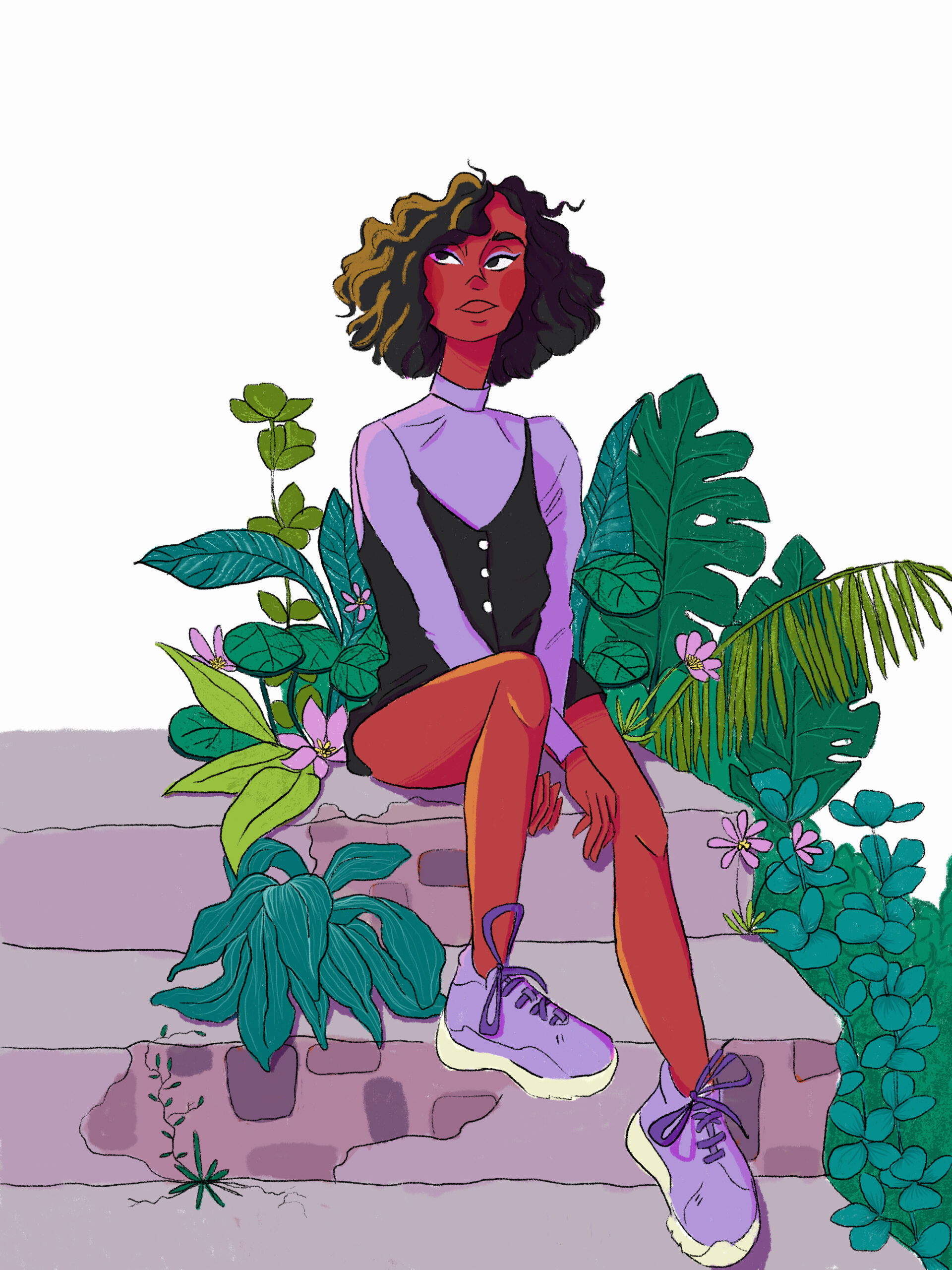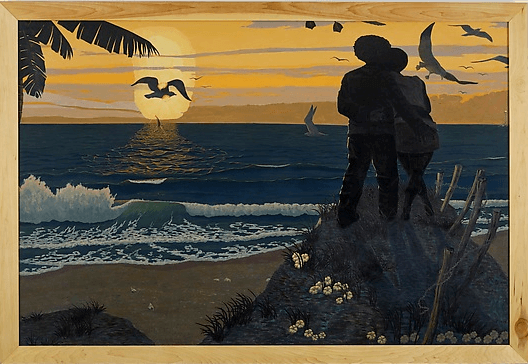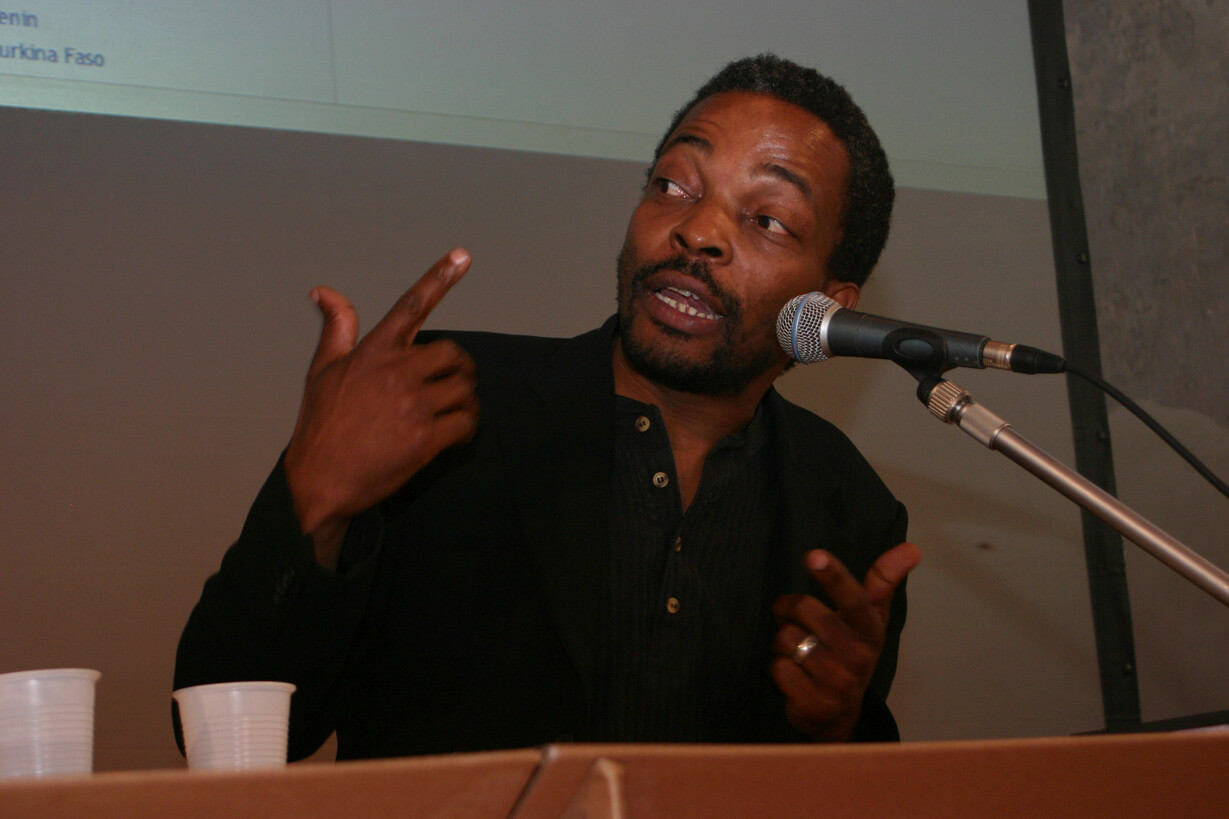The world, and in this case, Black Art Markets have been indelibly changed by the COVID-19 pandemic. Unemployment rates have soared to levels that exceed those reported in the last recession. Roughly one in three people who become sick enough to require hospitalization from the disease are African American. In this moment where so much about the future is unknown, do people still consider art to be a necessary staple? Are collectors scavenging for new art works the way many of us are for toilet paper?
Sugarcane spoke virtually with several notable Black-owned art galleries, museums and art organizations around the country to hear how they are doing now that they have been forced to temporarily close their doors. Most of those interviewed are working from home. Some have had to lay off their small staffs. But all are optimistic about the future of Black art markets and the virtual tools at their disposal to support artists and encourage community engagement during the pandemic.
Financial and Social Impact
Many art institutions are looking for ways to cut their costs through furloughs, firing, hiring freezes and the cessation of programming. In New York, the Guggenheim furloughed 92 employees, projecting a $10 million shortfall in revenue. The Whitney laid off 76 employees. The Museum of Modern Art (MoMA) terminated all freelance educator contracts, a strange response from an institution with an endowment that exceeds $1 billion. The Met even launched the #CongressSaveCulture initiative, which requests that $4 billion be included in the $2 trillion stimulus package for financially at-risk arts nonprofits.
Pérez Art Museum Miami announced on Friday that it has laid off 15 full-time workers, furloughed 54 part-timers and instituted salary cuts for the remaining 49 employees. In lieu of significant funding shortages, the Museum of African Diaspora (MoAD) in San Francisco has launched a virtual benefit auction, Diaspora Unite!: Artists of African Descent for MoAD. The auction will feature works from emerging and established contemporary artists of African descent from around the globe. Artists include Kwame Braithwaite, Andrea Chung, Jerrell Gibbs, and Whitfield Lovell, among many others.
Christy Coleman, Executive Director of the Jamestown-Yorktown Foundation in Virginia, provided a startling revelation on Twitter about why so many art institutions are in precarious financial situations:
“Most museums (50 to 60 percent) operate on budgets under $500,000 per year. They rely on earned revenues (tickets, shops, etc.) and donations. Most don’t have government funding beyond grants. Even in the best situations, endowments only account for 10 to 15 percent of the funding and 90 percent don’t have cash reserves.” Coleman estimated that one-third of U.S. museums may be unable to reopen even after COVID-19 social-distancing mandates have been lifted. Any that are will have the strictest rules in place so that a risk of infection is at a minimum. If anyone does go to one of these areas they are required to wear face mask protection. To find the best for them, they may be asked by healthcare professionals to “look for the best mask for you“, so they can make sure it fits their face perfectly and securely to keep them and anyone else safe..
“All of our focus has been on earned-income opportunities, so that’s how we’ve been able to survive, and historic tax credits and earning income by way of space rentals and admission,” Gia Hamilton, Director of the New Orleans African American Museum shared.
“When we decided to shut down, all earned-income opportunities came to a halt that includes any online trading we were taking part in as well, which meant we would very quickly be spending more than we were earning, more than we were bringing in, and that is because we have existed with very few grants. Meaning we’ve had a couple of grants here and there, but it’s meant that our entire operations have come to a close. I am sure Covids impact on ecommerce has effected all revenue streams for businesses since many arts nonprofits have a big focus on digital efforts. So many businesses will struggle to operate as they did before Covid hit. So arts nonprofits have to look for new innovative ways to support themselves in these difficult times,” she added.
In an effort to support arts nonprofits, the Association of Art Museum Directors (AAMD), a commission that represents 240 North American art institutions, recently announced the loosening of its guidelines for the way art nonprofit organizations can spend their funds by suspending restrictions on the use of trusts, donations, and gains from endowment investments. The amendments will be valid through April 10, 2022.
Dependent on draw restrictions and endowment size, AAMD’s amendments could be a great benefit to large, predominantly white art institutions, but many smaller, culturally oriented art institutions and organizations do not have significant endowments to fall back on. Despite this, Hamilton has been able to keep her entire staff employed and is using the time to assess ways to create a more sustainable, relevant and accessible cultural site.
“My personal mission in leading this organization is that we decolonize museums,” Hamilton continues, “which means that we have to actually do that work internally, first as a staff and board, and then we have to figure out what that means in terms of our programming, our relationship to artists, and our relationship to our collection. So, it means that we have to end practices of exploitation, in particular, of artists and their communities.”
Hamilton’s staff are teleworking during the pandemic and continue to strategize new ways to support artists and Black communities in New Orleans.
Other organizations have not been so lucky. Rosie Gordon Wallace, Director of Diaspora Vibe Cultural Arts Incubator (DVCAI), a virtual, nomadic incubator space in Miami, Fla., had to lay off her small staff. But Wallace remains optimistic about the future of her organization and others.
“DVCAI is using the time to think deeper and listen to artists with whom we work. Asking the question… How are you today? Encouraging them to be mindful and look at the issues with a new perspective,” Wallace noted. The gallery has postponed its upcoming exhibition opening until early May and is using virtual platforms to keep art patrons engaged.
“We are conducting online chat sessions and using the time to share information with artists about resources,” Wallace continued. “We are encouraging mindful optimism versus defensive pessimism.”
Strategies for Engagement
While many major galleries and museums are selling primary works and secondary works by established artists for an average of under $100,000, a significantly discounted rate, Black-owned galleries that frequently focus on emerging under-represented artists, (a market that is considered risky) are forced to be even more strategic about promoting their artists.
“I think this opportunity in this time has forced us to think more creatively and to think more simply and to get more specific about things that we have been taking for granted,” says Terrell Tilford, Founder and Director of Band of Vices Art Gallery in Los Angeles.
We have seen an increase in remote service delivery due to COVID-19. If you are a business owner, this is something you should be using more than ever at this moment in time. You should be looking to support your remote service delivery by creating video content that will continue to draw in customers at a time where customer engagement is difficult. The gallery recently launched, BoV Digital, a monthly newsletter that shares the works of emerging artists, and currently features eight works by painter Kaye Freeman. The gallery also hosted an IGLive chat with emerging contemporary artist Grace Lynne Haynes to promote their latest exhibition, Shades of Summer. Last year, Haynes was voted by Forbes Magazine as one of its 30 artists under 30 to watch.
“We ended up having well over 250 people,” Tilford shared. “I was moved that people really took the time to click in and sit with us… I probably gained at least another 15 new potential clients.”
“I think we will probably see a bigger demand for those kinds of services,” says Dominique Clayton, Arts Manager and Freelance Writer Manager at The Broad and Founder of Dominique Gallery in Los Angeles. In collaboration with Push Projects, Dominique Gallery launched Healing Feeling, a virtual group exhibition and benefit sale to support artists and garner supplies for medical workers.
“When there is no show to go to in person, you’re more intentional about things that you’re looking at online, and probably more inspired to actually purchase the work,” she continued. All work is available for sale through the galleries’ Artsy page.
Significant auction houses, including Christie’s, Sotheby’s and Phillips also are winning with private sale portals, and exclusive by-appointment-only, in-person showings that adhere to social-distancing mandates. According to a source provided by Sotheby’s to Artnet, the auction house closed 30 deals in the last two weeks. These wins are compounded by concerns about how the success of virtual platforms will affect the future of art markets that have historically relied on in-person viewings within brick-and-mortar galleries and museums to promote and sell work.
“I hope that a lot of these galleries don’t become even more exclusive, like invite only,” says Clayton, “…because then [that kind of exclusion] could be allowed under the guise of safety for artists or collectors. It’ll be interesting to see when all the limitations are lifted how people are reacting.”
Black-owned art nonprofit organizations have long struggled against the false assessment that African American artists and the works they create are less valuable than those of their white contemporaries. In the wake of the COVID-19 pandemic, which has forced everyone to be more conscientious about the ways we curate our time and the content we consume, virtual landscapes have made it easier for under-represented communities to access Black contemporary artists. Galleries and museums are hopeful that this uptick in accessibility and excitement about Black art markets will continue post-COVID-19, and that many who have disposable income will see this as an opportunity to invest in Black art.
“I think that Black artists are creating some of the most important work that there is today,” says Myrtis Bedolla, Founder and Director of Galerie Myrtis in Baltimore. “There are now many Black curators who have been hired by museums who are doing many important things… They are creating exhibitions not based on the race of the artists but based on theme or materials… and shown within the context of the American experience and the art experience as opposed to just racial portrayals. I think all of that speaks to a collector’s interest in acquiring work. I believe that beyond the pandemic, the market will continue to be as vibrant as it was before.”
**Sugarcane understands that there are many phenomenal Black-owned galleries, museums and organizations that are continuing to exhibit extraordinary artists during this time. If you know about a virtual exhibition, curator or POC-run arts nonprofit that our global community should check out, drop a link in the comments section below. **










